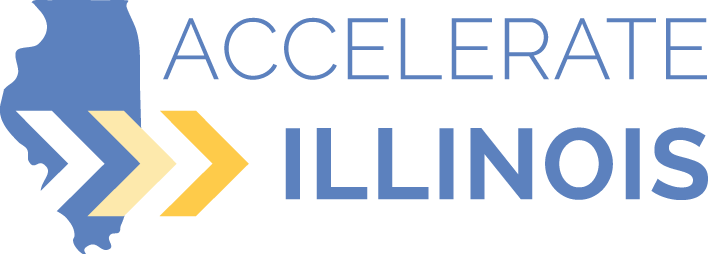Data Points: More jobs, but less transit located outside the city of Chicago

Of the 3 million people commuting by car in the region, nearly three-quarters are traveling to jobs outside of Chicago.
There’s no denying that Chicago is the primary job center and economic core of the region. The region’s public transportation system aligns well with that fact: Every major rapid transit line connects to the Loop.
But, in the seven-county Chicago region (which covers Cook, DuPage, Kane, Kendall, Lake, McHenry and Will counties), there are actually far more jobs located outside of the city—and the region’s transit system offers very few options for suburban residents to reach suburban job sites.
According to 2014 jobs data provided by the U.S. Census Bureau earlier this year, 2.7 million jobs are located in the suburbs of the seven-county Chicago region—more than double the 1.3 million located in Chicago itself. Breaking it down:
- Suburban Cook County rivals Chicago with more than 1.2 million jobs.
- The combination of DuPage, Kane, Lake and Will counties has more than 1.3 million jobs in all.
- Among municipalities, the region’s top 25 employment centers outside of Chicago are home to a total of more than 1 million jobs. They are led by Schaumburg, Naperville, Aurora, Elgin, Elk Grove Village and Joliet, in that order—where each municipality is home to more than 50,000 jobs.
To tease out the effect of Chicago as a job destination on the use of transit, the Metropolitan Planning Council used Census data from 2010, one of the last years where the Census provided information about commuters travelling to the city itself. We found dramatic differences in the use of transit by suburban commuters depending on whether their jobs were located in the city or not.
The numbers suggest a severe lack of public transit options for individuals working outside the city. As suburban parts of the region have grown in both population and job development, the transit system has not changed significantly to accommodate that growth. In his next installment of Talking Transit later this month, my colleague, Yonah Freemark, will provide a detailed breakdown of the ways in which commuters use transit to reach work in various parts of the region. His analysis highlights where there are gaps in the system and where future transit investments could provide the greatest benefits in connecting workers to suburban jobs.
When travelling to jobs outside of Chicago, the commute is almost entirely car-centric. Nearly 31 percent of almost 450,000 suburban commuters who worked in Chicago used transit compared to just 1 percent of the more than 2 million suburban commuters who worked elsewhere in the region, according to MPC’s analysis. And transit was far less likely to be used by those from Chicago making the reverse commute to jobs in the suburbs. Just 11 percent of Chicagoans commuting to work in suburban parts of the region used transit.
It’s important to remember that if folks working in the suburbs aren’t using transit that means that they’re driving to work. And since there are far more jobs in the region located in the suburbs, the daily commuting grind on our region’s roadways are mostly a product of workers travelling to jobs outside of the city. Of the more than 3 million people commuting to work in the region by car, 2.2 million or nearly three-quarters of them are travelling to jobs outside of Chicago, according to MPC’s analysis.
Those are the consequences of the lack of transit options to suburban jobs, and they’re very costly consequences. As MPC has noted through its Accelerate Illinois initiative to properly invest in the maintenance of the state’s roads and bridges: Illinois drivers spend an extra $3.7 billion a year on repair bills for damage from poor road conditions; drivers in metro Chicago spend an extra 71 hours a year stuck in traffic; and businesses lose hundreds of millions of dollars due to traffic delays.
Proper maintenance would reduce those costs but so would removing cars from the roadways during our daily commutes through the increased use of transit. Some have also noted that, even on a personal level, transit is cheaper than driving. The American Public Transportation Association publishes a monthly report on the estimated savings for transit users in the nation’s top 20 cities for transit ridership. The June report estimated nearly $950 a month and more than $11,000 a year for transit riders in Chicago.
Serious consideration of alternative methods to link transit to jobs in the suburbs could help bring down those costs and clear our roads for those who truly have no other way to get to work or to move about the region.

